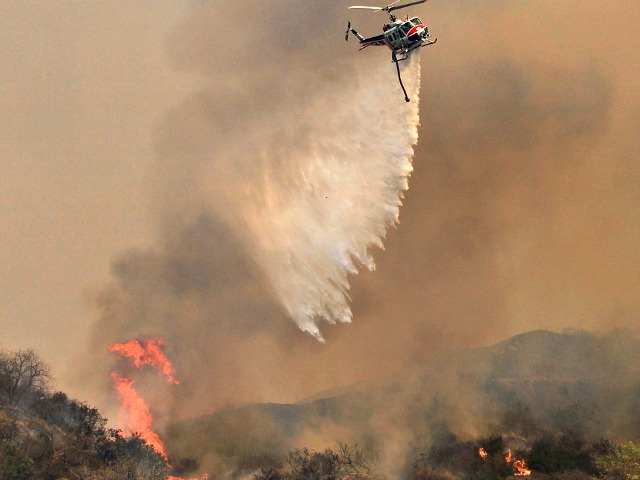On Saturday, Gov. Jerry Brown declared a state of emergency due to the rampant wildfires that are scorching central and northern California. Meanwhile in the southern part of the state, the West Nile virus is making its presence known in Los Angeles County and the Long Beach area, as more mosquitoes tested positive for carrying the potentially deadly illness.
Now entering the fourth year of a statewide drought, thousands of acres of dry, parched land in El Dorado, Amador, Butte, Humboldt, Lassen, Madera, Mariposa, Mendocino, Modoc, Shasta, and Siskiyou counties have burned or are still burning, according to the Los Angeles Times.
Much of the state has undergone evacuations as a result of the fires, mainly in rural communities. Dennis Mathisen, a spokesman for the California Department of Forestry and Fire Protection, explained that to a great extent the burning is coming early as a result of the drought. Typically the fire season doesn’t begin until September. “With warmer weather conditions, low humidity, and some wind, and all you need is a spark, and a series of dry lightning strikes, and that’s a recipe for disaster,” Mathisen said.
The Times reports that currently in Modoc County, 150 residences were threatened in a three-day blaze that has charred 12,500 acres and is only 15% contained. To the west, a two-day old, 6,900-acre fire in Oregon Gulch is now working its way to Siskiyou County, home to Mount Shasta. To the south of that, 12,000 acres have burned between the Bald, Coffee, and Eiler fires in Shasta County. Moreover, 4500 acres have burnt or are still burning in Yosemite National Park, while an 11,000-acre fire in the Sierra National Forest is still raging, with only 15% of it being contained.
Adding more problems for California is the resurgence of the West Nile Virus. The Daily News reports that 15 mosquito samples of the infectious disease were found in Encino, Van Nuys, Sherman Oaks, Reseda, North Hills, and Northridge. Meanwhile, five sentinel chickens used for virus surveillance showed virus antibodies in east Long Beach. West Nile virus is transmitted to humans and animals by the bite of an infected mosquito.
Although most people believe that mosquitoes flourish in wet conditions, Kelly Middleton, spokeswoman for the Los Angeles County Vector Control District, said that drought conditions can give rise to the disease. “We actually see more West Nile virus activity in drought years,” she said. “This year in California, there are parts that are seeing more activity than usual.”

COMMENTS
Please let us know if you're having issues with commenting.